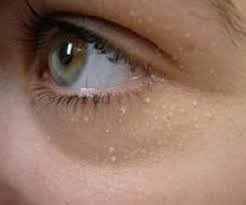Milia Treatment in Abu Dhabi, those small, white bumps that commonly appear on the skin, can be a source of frustration for many individuals.
While they are typically harmless, milia can detract from the overall appearance of the skin, particularly when they occur in noticeable areas such as the face.
Microneedling is emerging as a promising treatment option for addressing milia and achieving smoother, clearer skin.
Understanding Microneedling
What is Microneedling?
Microneedling, also known as collagen induction therapy, is a minimally invasive cosmetic procedure that involves the use of a device with fine needles to create tiny punctures in the skin’s surface. These micro-injuries stimulate the body’s natural healing process, resulting in increased collagen and elastin production, which helps improve the appearance of the skin.
How Does Microneedling Work?
During a microneedling procedure, the device is passed over the skin, creating controlled micro-injuries in the targeted area. These micro-injuries trigger the skin’s natural repair process, leading to the formation of new collagen and elastin fibers. As the skin heals, it becomes firmer, smoother, and more even in tone and texture.
Microneedling for Milia
Potential Benefits of Microneedling for Treating Milia
Microneedling offers several potential benefits for individuals with milia. By creating micro-channels in the skin’s surface, microneedling can help facilitate the release of trapped keratin and sebum, which are often the underlying causes of milia. Additionally, the stimulation of collagen and elastin production can help improve skin texture and reduce the appearance of milia over time.
Safety Considerations
While microneedling is generally considered safe when performed by a trained professional, it’s essential to undergo the procedure under the supervision of a qualified dermatologist or skincare specialist. Proper sterilization of the microneedling device and adherence to safety protocols are essential to minimize the risk of infection or other complications.
Procedure of Microneedling for Milia
Preparation Before Microneedling
Before undergoing microneedling for milia, it’s essential to consult with a dermatologist or skincare professional to assess your skin’s condition and determine if you are a suitable candidate for the procedure. Your provider will discuss your medical history, skincare concerns, and treatment goals to develop a personalized treatment plan.
Microneedling Process
During the microneedling procedure, your skincare provider will cleanse your skin and apply a topical numbing cream to minimize discomfort. The microneedling device will then be passed over the treatment area, creating controlled micro-injuries in the skin’s surface. The depth and intensity of the treatment can be adjusted based on your individual needs and tolerance.
Aftercare and Recovery
Skincare Routine Post-Microneedling
Following microneedling for milia, it’s essential to follow a gentle skincare routine to promote healing and minimize the risk of complications. Your provider may recommend specific skincare products to use during the recovery period, such as gentle cleansers, moisturizers, and sunscreen.
Potential Side Effects and How to Manage Them
While side effects of microneedling are typically mild and temporary, they may include redness, swelling, and mild discomfort. It’s essential to avoid sun exposure and harsh skincare products during the recovery period to prevent irritation and complications. Your provider will provide detailed aftercare instructions to help you manage any side effects and ensure optimal results.
Conclusion
Microneedling is emerging as a promising treatment option for individuals with milia, offering the potential to improve skin texture and reduce the appearance of milia over time. By stimulating collagen and elastin production and facilitating the release of trapped keratin and sebum, microneedling can help achieve smoother, clearer skin with minimal downtime.


